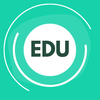When to use this cheat sheet
- Planning a learning transformation
- Stuck in the middle of a difficult change
- Need quick framework comparisons
- Looking for practical application tips
- Want to combine different approaches
Quick Start:
- Scan the frameworks
- Find your situation
- Grab the tools you need
- Apply and adapt
Think of this as your pocket guide for when you need quick change management insights tailored for L&D. Each framework comes with key points and practical applications – perfect for real-world use.
ADKAR framework
The ADKAR framework is a five-stage, people-centered approach to change management, created by Prosci. Each stage—Awareness, Desire, Knowledge, Ability, and Reinforcement—aligns with key steps that individuals naturally go through when adapting to new behaviors or systems. ADKAR is especially effective in learning and development contexts, as it mirrors the progression of learning: starting with understanding why change is necessary, motivating individuals to engage, equipping them with skills, supporting hands-on practice, and sustaining long-term adoption. By addressing both emotional and practical needs, ADKAR helps L&D professionals guide individuals and teams through change in a way that is structured, measurable, and supportive.
Why ADKAR works for L&D
- Matches natural progression in learning, from awareness to sustained change
- Addresses both emotional motivation and practical needs
- Provides clear success metrics at each stage to gauge and support progress
- Identifies and removes barriers to change for individuals and teams
Best uses for ADKAR
- Learning platform migrations
- Blended learning adoption
- New performance systems
- Training methodology shifts
ADKAR breakdown
- Awareness
- Goal: Build an understanding of why change is necessary by making a compelling case that people can’t ignore.
- Signs of low awareness: "Why are we changing?", "The old system works fine," or "No one told me about this."
- How to build awareness:
- Emphasize personal benefits by showing how changes impact workflows and career growth.
- Share success stories with positive real-life outcomes to build confidence.
- Show how new skills can open future career opportunities, enhancing professional development.
- Offer early-adopter incentives, such as priority access to resources or recognition for engagement.
- Tools: Learning metrics dashboards, skills gap analyses, cost calculators
- Desire
- Goal: Create genuine motivation by showing personal benefits and inspiring enthusiasm beyond “mandatory” compliance.
- Signs of low desire: "The old way works better," "This won’t help me," or "I don’t have time."
- How to build desire:
- Highlight personal wins, career impact, and positive outcomes.
- Map personal benefits, such as efficiency gains or career development
- Share success stories of early adopters
- Offer incentives for engagement, like exclusive access to resources
- Tools: Personal impact assessments, career pathway maps, learning journey visualizers
- Knowledge
- Goal: Equip people with the right information at the right time, presented in manageable formats.
- Signs of low knowledge: "I don’t know how to use this," "Where do I start?", or "What if I make a mistake?"
- How to provide knowledge:
- Offer targeted learning, accessible, in sequential formats.
- Break learning into step-by-step guides
- Provide hands-on practice through practice environments or peer mentoring
- Tools: Quick reference guides, how-to videos, sandbox environments, FAQ databases
- Ability
- Goal: Create opportunities to practice, learn, and master new skills in a safe environment.
- Signs of low ability: "I tried but it didn’t work," "It takes too long this way," or "I keep making mistakes."
- How to build ability:
- Offer structured practice scenarios and real-time coaching.
- Set up hands-on workshops and practice labs for application
- Provide feedback and guidance through coaching sessions or simulations
- Tools: Skill assessment rubrics, practice labs, coaching checklists, support tools
- Reinforcement
- Goal: Ensure long-term adoption through recognition, continued support, and positive reinforcement.
- Signs of low reinforcement: "We’re going back to the old way," "Nobody else is doing it," or "It’s not worth the effort."
- How to reinforce change:
- Recognize efforts, share progress, and celebrate milestones.
- Highlight success metrics and recognize team champions
- Build community support and foster peer connections
- Tools: Recognition programs, progress dashboards, community platforms, success story templates
Success factors for ADKAR
- Strategic elements: Executive sponsorship, alignment with learning strategy, dedicated resources, realistic timelines, measurement framework
- Tactical elements: Champion network, communication plan, support system, feedback loops, recognition programs
Emergency fixes by stage
- Awareness → Share real impact stories
- Desire → Find personal wins and benefits
- Knowledge → Simplify content and delivery
- Ability → Increase practice and feedback
- Reinforcement → Build peer support and recognition
Pro tips for effective change management with ADKAR
- Start with data to build awareness
- Make each stage personally relevant
- Incorporate practice time in ability building
- Communicate benefits consistently
- Celebrate small wins to build momentum
- Avoid skipping steps; each one builds toward the next
McKinsey 7-S framework
The McKinsey 7-S framework offers a structured tool to ensure that all elements of an organization are aligned during change. In learning and development, it serves as a comprehensive “health check.” Misalignment among these elements can cause learning initiatives to miss their mark, so using this framework helps teams coordinate resources, strategies, and values for cohesive change.
Best uses for the 7-S framework
- Before launching major L&D transformations
- During new technology implementations
- When learning initiatives aren’t gaining traction
- To address recurring resistance to change
- When learning outcomes fall short of expectations
The 7 elements of the McKinsey 7-S framework
- Strategy
- Purpose: The strategy acts as the guiding roadmap, ensuring that all learning initiatives align with business objectives and provide value. A clear strategy turns learning from scattered efforts into a coordinated journey.
- Key indicators of alignment:
- Defined objectives that connect learning goals with business outcomes
- Clear success metrics and KPIs
- Allocation of resources and timelines that support implementation
- Red flags:
- Learning activities that don’t link with organizational priorities
- Lack of success metrics
- Vague or competing learning objectives
- Structure
- Purpose: Structure provides the organizational framework for L&D, outlining decision-making processes and how learning is delivered. Clear structure streamlines workflows and supports alignment with strategy.
- Key indicators of alignment:
- Well-defined reporting lines and decision-making authority
- Organizational structure that supports collaboration and alignment
- Clear roles and responsibilities within L&D and across teams
- Red flags:
- Overlapping or ambiguous roles
- Bottlenecks in decision-making
- Siloed teams with limited communication or collaboration


